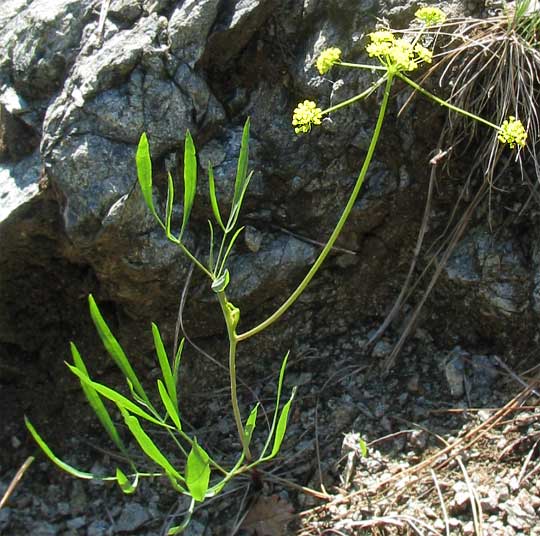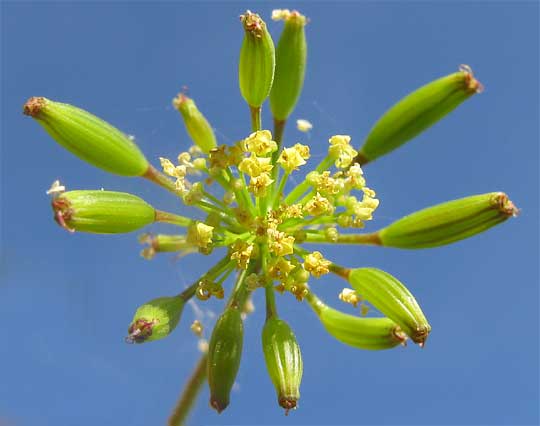Excerpts from Jim Conrad's
Naturalist Newsletter

from the the May 31, 2009 Newsletter, issued from the Siskiyou Mountains west of Grants Pass, Oregon:
NINELEAF BISCUITROOT
You can see one of the most common wildflowers above. That's a Nineleaf Biscuitroot, LOMATIUM TRITERNATUM. The species has been flowering for about a month but fruits are only now beginning to form, as shown below:

If you're familiar with plant families you'll instantly recognize that this species belongs to the Parsley Family, the Umbelliferae. It's clearly an Umbelliferae because of the disposition of flowers and fruits in the last photo in a special kind of flower-grouping or inflorescence known as an umbel. An umbel is an often flat-topped inflorescence whose flower stems, or pedicels, arise from a common point like the stays of an umbrella. Queen-Annes-Lace flowerheads are wonderful examples of umbels.
The "nineleaf" part of the plant's English name should be "nine-leaflet" to be accurate, for in the first picture you saw two compound leaves, each with about nine leaflets.
The "biscuitroot" part of the name cues us that its brown, finger-size taproots are starchy and edible. Native Americans once ate them cooked or dried and ground into flour. The flour could be used to make a kind of mush or shaped into cakes and stored for later use. The roots' flavor has been compared to celery or parsnips, two plants also in the Parsley Family.
If you Google the genus name Lomatium you'll find pages and pages relating to the medicinal uses of various Lomatium species, mainly as an anti-viral and anti-bacterial agent. It's claimed to be effective for respiratory and urinary infections, herpes simplex, sinusitis, chronic-fatigue syndrome and a lot more. One site sells ¼ pound for $8.64.
Nineleaf Biscuitroot grows throughout the western states, and numerous other biscuitroot species exist. California's Jepson Manual describes about 30 Lomatium species for that state, while Weakley's Flora of the Carolinas covering most of the Southeast lists none.